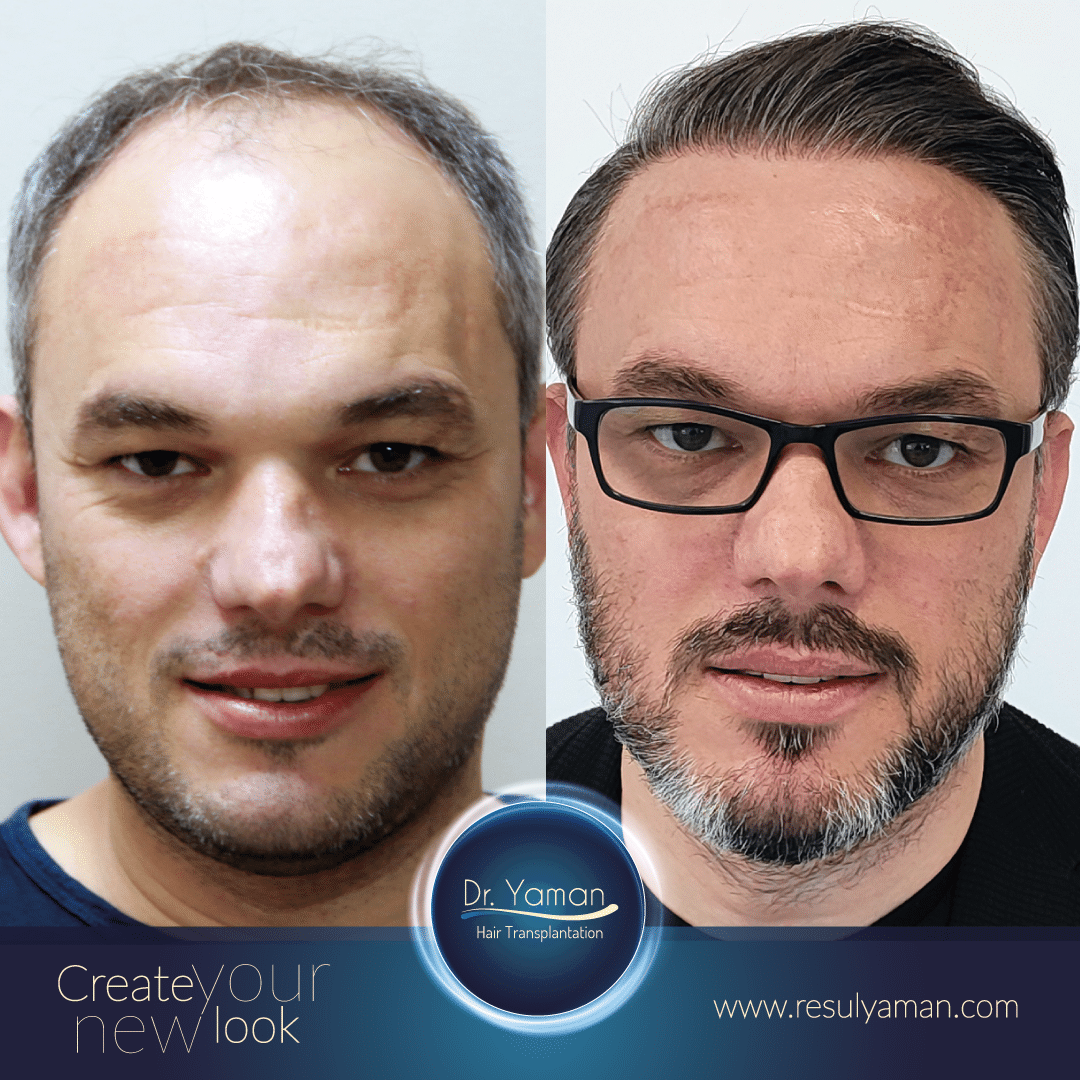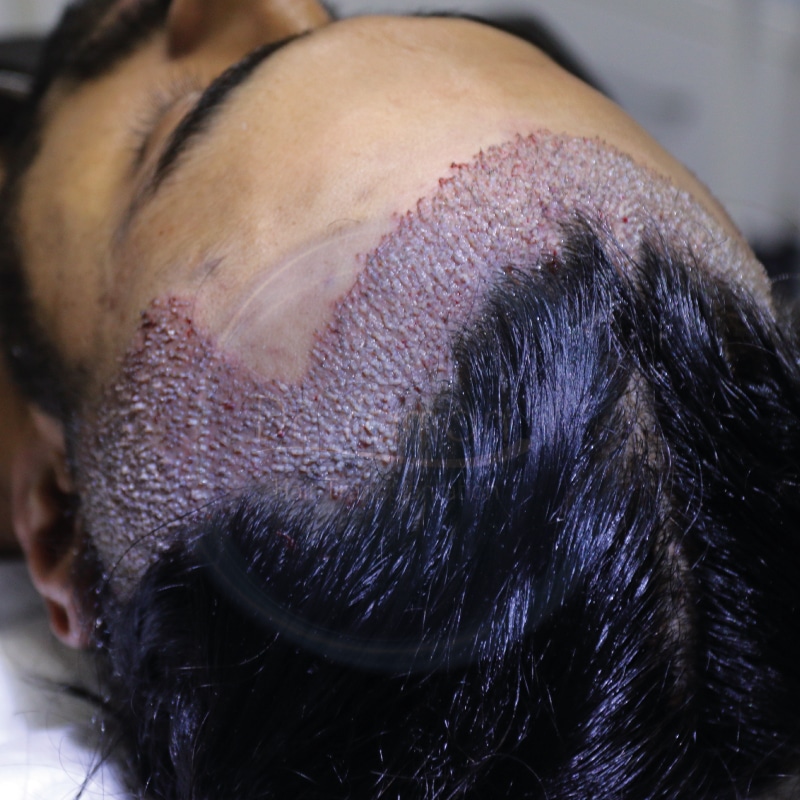Hair transplant procedures are always evolving with ongoing research and development, and one recent new technique is using body hair in FUE transplants. However, is hair transplanted from the body as effective as hair transplanted from the scalp?
In this guide, we’re going to go over everything you need to know about using body hair in hair transplant; how it works, when it’s used, and its benefits and downsides. Let’s take a look!
What is a hair transplant?
A hair transplant as exactly it sounds; it’s a surgical procedure that involves removing healthy hair follicles from one area of the body (typically the neck or sides of the head) and transplanting these follicles back onto the scalp via incisions. While most transplant surgeons will prefer to use hair from the head and neck area, body hair can sometimes be used as a substitute when donor grafts are sparse on the scalp.
Why isn’t body hair typically used in hair transplants?
Typically, body hair is avoided during hair transplants as it tends to be coarser and more wiry than scalp hair. In addition to this, hair on the head has a longer anagen phase (growth phase) than body hair; this makes it best suited for regrowth efforts.
It’s also important to note that the skin is much thicker on the body than around the scalp; this can make the excision process more difficult, and result in an uneven finish.
However, using exclusively hair from the head and neck isn’t always possible; of all 5 million hair follicles on the body, only 100,000 are on the head; this can mean working with a limited number of donor grafts in those with severe or total hair loss.
Can body hair be transplanted to the head?
Put simply – yes. Body hair can, in some cases, be transplanted to the head – so long as the procedure is carried out by a trained professional. In fact, in some cases, body hair can actually be more useful – for example, in someone whose previous hair transplants were unsuccessful. Here are a few instances where body hair might be used either alone, or in conjunction with grafts taken from the head and neck:
For those with severe hair loss
For some people experiencing full-on baldness, there simply aren’t enough healthy hair follicles around the head and neck area to create enough grafts. Don’t forget that the surgeon will need to graft anywhere between 1,000 and 4,000 hair follicles for a successful transplant, and in some cases, there simply aren’t enough donor grafts for a complete treatment. In this case, grafts can be taken from elsewhere on the body.
For added density
For those with fewer donor grafts, or simply those who want a fuller finished look, body hair may be transplanted in conjunction with hair from the head and neck. As body hair (such as beard hair) tends to be thicker than the hair grown on the head, this can help to add volume and density during the regrowth stage.
Failed transplants
In some cases, those suffering with severe hair loss might have already undergone hair restoration surgery, with the initial transplant failing to produce the desired results. This can often be down to an insufficient number of hair grafts, so some surgeons may supplement the head and neck grafts with some taken from other areas of the body.
Read More: How Does Stress Affect Your Hair Health?
Can a hair transplant only be performed with body hair?
No – it’s not possible to carry out a hair transplant using only donor grafts from the body. This is because the hair follicle’s growth phase (known as the anagen phase) is much shorter for hair on the body, and the anagen phase for hair on the head and neck is around double. This could mean patchy regrowth, hair falling out prematurely, and an uneven final finish once the regrowth process is complete.
What parts of the body can be used in hair transplants?
If a patient is presenting severe hair loss, or has experienced a failed hair transplant surgery in the past, a surgeon may opt to take hair grafts from the following body parts:
Chest
Hair grafts can be taken from any part of the body, but chest hair is one of the most commonly used areas when supplementing donor grafts from the head and neck. A typical harvest could include anywhere from 300 to 1000 hair grafts, and the procedure is carried out using a larger excision needle.
Beard
Beard hair can be highly successful when used to create donor grafts during a hair transplant, as it’s much denser and thicker than hair on other areas of the body. Beard hair is mostly used for the middle of the scalp – either to create volume or density – as its rigidity makes it an unsuitable choice for the hairline.
Also Read: Transplanted Hair Falling Out After 1 or 2 Years: What to Do?
What are the disadvantages of using body hair during a hair transplant?
One of the main disadvantages of using body hair during a hair transplant is the possibility of incision scarring; small scars can be left behind after hair grafts are extracted. Most trained surgeons will therefore only remove and graft a small percentage of donor grafts from the body or face – usually only up to 1,000.
FUE Hair Transplant Turkey
If you’re experiencing hair loss, hair thinning or baldness, a FUE hair transplant procedure in Turkey could help to fully restore the hair on your scalp – even if you don’t have much hair left on your head. By combining hair grafts from the neck, head, and other choice areas of the body, you can enjoy a full head of hair and soaring confidence.
 WhatsApp
WhatsApp Get Mail!
Get Mail!
 English
English Italiano
Italiano Español
Español Türkçe
Türkçe Português
Português Français
Français Deutsch
Deutsch عربي
عربي






